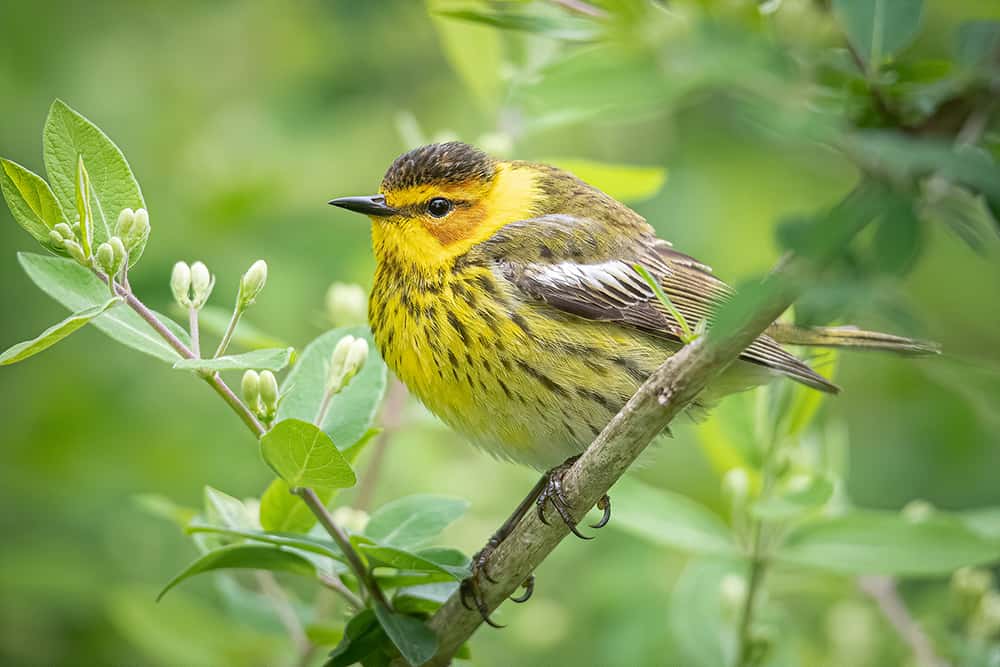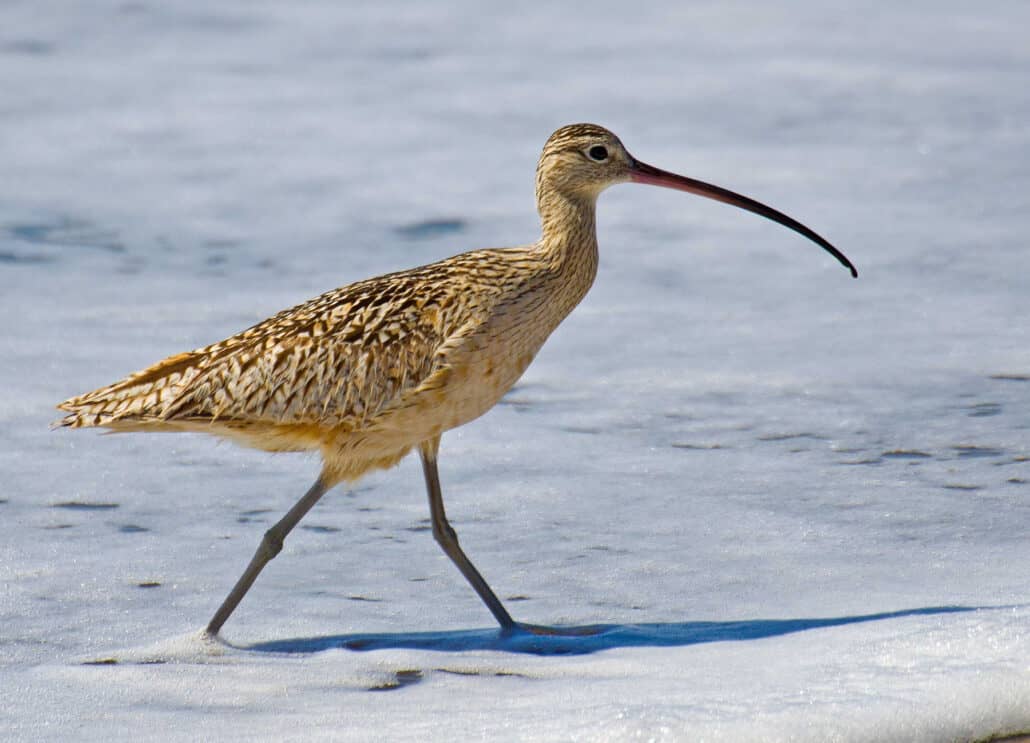The Great State of Tennessee is a great place to watch birds, whatever your level of interest or skill, and it’s not just the abundant bird life but the people that make it so. The citizen-scientist movement has been alive and well in the state for many decades and your interest in birds will only add to it.
Bird watching has a long and storied history in Tennessee, beginning with the journal entries made about birds by some of the earliest explorers in the 1600s. The famous American ornithologist Alexander Wilson (1766–1813) spent several weeks studying birds in the state in the spring of 1810, and he observed, among others, the Nashville and Tennessee warblers, which he had first described from specimens collected in Middle Tennessee. John James Audubon (1785-1851), who spent several years in neighboring Kentucky, made a number of trips on the Mississippi River in the early 1800’s and traveled overland across Tennessee at least once. The records of those trips are sparse, but do mention the Ivory-billed woodpecker and the Carolina parakeet, both now considered to be extinct. Systematic ornithology began after the Civil War with visits and reports by William Brewster (1851–1919) and a number of others. The first comprehensive list of state birds was published in 1895.
In 1915 the first state bird club in the Southeast, the Tennessee Ornithological Society was founded in Nashville, and the study of the state’s birds by Tennesseans has grown exponentially since that time. Since the beginning, the objectives of this independent, non-profit, educational-scientific organization have been to promote the scientific study and conservation of birds and to publish the results of its investigations. The TOS publishes a quarterly journal, The Migrant, which includes seasonal and other sight records and articles to facilitate the tracking of changes in the state’s bird populations. The organization is open to all with an interest in birds and includes professional scientists and educators and non-professionals from all walks of life. There are currently eleven local chapters from Memphis to Bristol and some 800 members. There is a statewide member’s newsletter, The Tennessee Warbler, and the local chapters also publish periodic newsletters. Communication is facilitated through monthly meetings and an Internet list serve. Local field trips, counts, and forays are frequent and visitors are always invited. State meetings are held in different locations across Tennessee in spring and winter. Major collaborative projects have included the Audubon Christmas Bird Counts, Partners in Flight, and Teaming with Wildlife.
What makes bird watching in Tennessee remarkable and special
Tennessee is a big, beautiful, ecologically diverse state. Topographically it is interesting, rising almost 6,500 feet in elevation from the west to the east over a distance of 500 miles. Its 42,144 square miles are 50 percent forested and include more than 900 square miles of inland water. There are three major rivers and an abundance of open agricultural land with sufficient wild areas, so that one can still, as the oldest natives might say, “get way back up in the woods.” It has good roads, including the confluence of several interstate highways, so one can easily and quickly access birds throughout the state.
The state is home to approximately 5 million people who are notably friendly, helpful, and nature-oriented. Though not precisely its original meaning, every year many Tennesseans “volunteer” their yards and patios, even their dens and living rooms, to scores of birders who have come to view an unusual bird visiting their feeder. Driving directions are usually easy to come by if one will ask, and permission is often granted to watch birds on private property. In general, people who live in the rural areas of the state enjoy the natural world and appreciate others who take a special interest in it.
The climate contributes positively to the birding experience in Tennessee. Most of the days of the year afford comfortable weather for birding in the field. In general, the winters are mild, the summers are hot, and the rainfall is abundant. There is no spring thaw to speak of , compared with the more northerly states. Even the harshest winter only holds its grip on water and land for only a few days at a time. Snowfall is light in Middle and West Tennessee, but often heavy in the eastern mountains.
The weather begins to moderate in February and by early March there are occasional 60ºF degree days, even 70s by the end of the month. Primarily because of the elevation, it is always a bit cooler, on average, in the eastern part of the state, and the warming may be a few days later than in the west and middle. The eastern mountains are the latest to warm. The precipitation is variable, some years drier than others, and the east is wetter, but on average the rainfall is around 50 inches per year. It can be very wet in the higher mountains, though, with the peaks averaging over 80 inches per year. The late summer and early fall is downright hot in the lower elevations of the state, averaging above 80ºF and the humidity is high. But this only lasts for a few weeks. Fall is pleasantly cool, crisp and beautiful as it progresses.
All of the birds that can be regularly found in Tennessee can be found in other states, particularly nearby inland states, but some can be found more readily because they breed or winter here in significantly greater numbers. Some species are easier to find because they regularly hang out in specific habitats and locations. The current list of species verified to have been seen at least once in the state totals close to 400, but this number is changing annually. With more of us in the state watching birds, the number of birds we find in Tennessee is certain to grow.
A note on terminology: If you are new to the state, you need to know that it is divided, even by state law, into three so-called grand divisions: West Tennessee, Middle Tennessee, and East Tennessee. This has deep historical roots and has not been without controversy, at times. Residents use the shorthand readily, although, to newcomers or visitors, use of the “middle” rather than “central” may seem awkward.
Key species and phenomena
As birds go, Tennessee is known for its woodland breeders, particularly its high altitude nesters, such as the black-throated blue warbler, and its large number of wintering waterfowl and American bald eagles on its lakes and rivers. The gathering of gulls and loons on some of these waters, on their regular timetable, is impressive. Situated on the major migration route of many birds, the state is also known for its spectacular shorebird migration along the Mississippi River, the passing of thousands of sandhill cranes, primarily through the east central parts of the state, and a passerine migration statewide that can introduce the novice birder to many unfamiliar species.
Bird watching in Tennessee can yield rewards at any time of the year, but there is a day, during the spring, each and every year, when your interest in birds and your patience and careful observation can be greatly rewarded. No one can ever predict exactly which day it will be, although many bird watchers try. But if you are out in your yard or in the woods anywhere in the state every day from about the middle of April through the middle of May, and you pay close attention, you will know it. The summer visitors have arrived and the number and variety of migrants who are passing through are at their peak. The birds in the trees, many different species, may seem to come in waves, moving first in one direction and then the other, feeding on invisible insects and other morsels. Many, if not most, are singing and the confusing mixture of songs may even seem dissonant to the listener. There may be so many species of wood-warbler at one time that it could be described as a “warbler attack.” And it’s not long before the condition known as “warbler neck” sets in and you have to tuck your chin, stretch, and take a break.
Knowing this, some birders may set out in teams (of no more than four) to set a record for the total number of species seen in a single 24-hour period in a form of competition call a “Big Day”. The current Tennessee Big Day record for any day of the year was set on May 10, 1997 and is 174 species. It is telling that the other closest counts were on May 7, 8, and 9 in various years. (The current record for any day, any month in all of the states is 258 species set by a team of four in Texas on April 24, 2001). You may never participate in a Big Day other than in you own backyard, but as you stand amidst the wonder of it you can see the possibility and understand the allure.
Maybe the most important thing about the Big Day records, which are available from the American Birding Association www.americanbirding.org , is what they can teach us about the seasonal distribution of birds in our area. Careful study of the details and the counts, knowing that the competitors had developed a strategy and were trying to see every possible species, can be instructive. So can the Audubon Christmas Bird Count results www.audubon/bird/cbc which include all the species and individual birds counted in some 25 15 mile diameter circles across the state on one day each year from December 14th through January 5th. These data cover more than 100 years.
The distribution of species through the seasons is important to note. Sixty or so species winter in Tennessee and then repair to more northerly climes for the warmer months to breed. By mid-May, most of the 80 or so species that regularly migrate through the state, but do not stay, are no longer here. Of the 50 or so species that leave for the cold months and then return to their summer homes here, about 30 are among the top 100 birds common to the state depicted in this book. And, over 160 species have been found breeding in the state, though the number of significant, regular breeders is around 120.
A bonus for Tennessee birders watching for passing sandhill cranes is the occasional sight of the rare whooping crane. The Whooping Crane Eastern Partnership (WCEP), a project to restore the endangered whooping crane to the eastern United States, is located in Wisconsin and uses ultralight aircraft to assist captive-bred and -raised birds to make their first migratory journeys to the upper Florida Gulf Coast. These flights are tracked each year on the internet and with planning and a little luck one can get a glimpse of these special birds from a vantage point somewhere in East Tennessee. The routes and timetables vary with the weather and other factors and every effort is made to protect the birds from harm, including unnecessary human contact. A few of the now near-20 wild whoopers have been seen using the Hiwassee Refuge north of Chattanooga.
Tips for successful birding
Good preparation and planning is a key to successful birding. Use the resources at your disposal, including this book, as you prepare to observe birds more closely at home or in the field. Consult your field guides and other published materials. Look at your own field cards or journals, if you keep them. And check out your questions on the internet; use a public library connection if you need to.
A specific caution: In the wake of the recent terrorist attacks, homeland security issues and attendant restrictions have become of concern to bird watchers. It is ironic that at a time when there are more binocular and scope using birders than ever in our history the level of suspicion of those who wield the tools of our hobby is the highest ever. Today, increasingly, especially near dams and reservoirs, water treatment plants, airports and military installations there is heightened security. Never enter a posted or blockaded area. If possible, identify yourself in advance, even if looking into such an area from outside. Even “public space” has a different meaning in this era than in the past. Strive to maintain a comfort zone when birding that works for everyone concerned, including you. Ask permission. Explain yourself. Never violate private property, even by looking through your binoculars.
Another caution: Hunting, including the hunting of game birds, is a popular sport in Tennessee. Besides the obvious wild turkey, dove, quail, ducks and geese a dozen other species, sought by bird watchers and hunters alike, have a season, including Wilson’s snipe, rails and American woodcock. For safety’s sake, always check the hunting season dates www.state.tn.us/twra/hunt when headed for the open fields, woods, or water to watch birds.
Learn and practice the etiquette and the ethics of birding. You will stay in the good graces of your fellow travelers and the others you encounter along the birding trail. You will be rewarded, stay out of harm’s way, and ensure that the birds are taken care of as well. (See the ABA Code of Ethics at www.americanbirding.org/abethics.htm )




